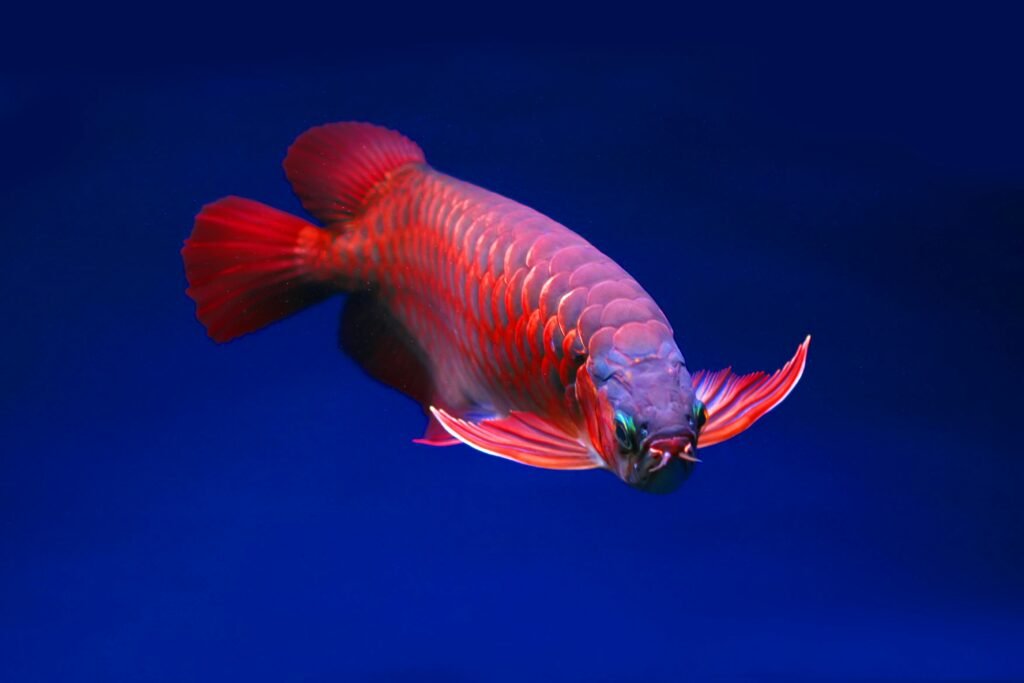Introduction: The World Beneath the Water
- Have you ever stopped to wonder what secrets lie beneath the deep shimmering blue ocean? Though fish often go unnoticed, this is one of those special creatures on the planet. The general estimate of known fish species is more than 33,000. Ranging from great magnitude to minute size, they could glow in the dark, generate electric shocks from their bodies, or even walk on land! These marvelous creatures have lived as long as 500 million years in evolution beyond comprehension.

Consequently, the rank of fish may depend a lot on its functional importance in marine ecosystem and culture; thus, they tend to be rather less well documented. With the little insight this article shall provide, you will be well thought about this miraculous world. So let’s dive in for some astounding facts about them that may change how you see, think, and behave about those underwater spectacles forever!
- Fish Have Been Around for Over 500 Million Years
One of the oldest animals ever, fish appeared as far back as the Cambrian period. Indeed, they existed long before the dinosaurs and have withstood many episodes of mass extinction. Some of the earliest-known fish types included jawless Haikouichthys, which appeared eellike, but rudimentary. Their amazing adaptability afforded them the chance to evolve into very different, quite protected fishes, especially on account of their large diversity of available species. Fossil records show that others, such as Dunkleosteus, were gigantic carnivores with armored plating, thus demonstrating what divergent paths various species of fish seemed to have traversed over time.
- They Can Recognize Human Faces
Believe it or not, some fish are capable of recognizing human faces. In a research experiment that involves archerfish, they could identify people among others without such advanced traits as a neocortex like in mammals. This makes us rethink how we see fish intelligence that they are actually more perceptive than thought. This skill awakens further curiosity about cognitive capabilities of other fish species and their interactions with the environment, which could open new paths to research in marine biology.
- Not All Fish Need Oxygen to Survive
Lungfish, a relatively unique fish found in Africa, South America, and Australia, can go for years without water by digging a hole in the mud and secreting a mucus cocoon out of which they breathe air. Yet, this is not all: some species of icefish in Antarctica have even developed antifreeze proteins in their blood, allowing them to survive in freezing waters with low oxygen availabilities. One more remarkable case is that of the climbing perch, hailing from Southeast Asia, which can breathe air and also walk on land in search of better habitats, making it one of the best-adjusted species of fish.
- Fish Can Talk to Each Other
Despite everyone’s assumptions, fish are not silent; they converse with sounds, body movements, and even bioluminescence. For example, toadfish make low-frequency sounds while courting, while other fish, such as clownfish, make clicks and pops to assert themselves. In the dark waters of the deep sea, some communicate with light now and then. Cichlids have been demonstrated to utilize sophisticated visual signals to ward off rivals and woo mates, adding another dimension to the complexity of fish communication than was thought previously.
- Some Fish Can Use Their Fins to Walk on Water
Mudskippers are among the strangest of all amphibian fishes; their amphibious nature gives them the power to use their fins to carry their bodies across the land. The intertidal zone is their habitat, where they spend most of their time outside water. Another astounding case is that of the climbing perch, which can crawl on its gill plates for short distances on land and breathe air for days. The long period of surviving without water proves the link between aquatic life and a terrestrial form of life.
- The Smartest Fish in the Sea
While many people think of intelligence as characteristic of birds and mammals, some fish have displayed remarkable abilities in problem situations. The cleaner wrasse has passed the mirror test-an especially hard test that is said to test animal self-awareness-for instance. That means, they recognize their own reflection; they thus have this in common with primates, dolphins, and elephants. There exist also octopuses, knowingly not constellation fishes yet often construed as such, which do show some exceptionally high problem-solving powers-increasing the complexity of marine intelligence.

- Some Fish Can Change Gender
The ability to change its sex into the opposite one is possibly one of the most fascinating bioenergetics even shown by fishes. The clown fish undergoes sex changes from male to female depending on the situation. California sheephead is another type of fish that can also change from F turned into M because of environmental situations. This feature enables better population continuance. When the impairment of gender occurs, often this phenomenon falls under social hierarchy, environmental shift, and reproductive success, therefore forming a characteristic feature of fish evolution.
8.Electric Fish That Can Generate Voltage
Catching eels for their 600-volt ability to shock prey into submission comes readily to mind. But they aren’t the only electric fish around. Some other species such as elephantnose fish produce a weak electric field to help them navigate through muddy waters. Scientists are looking at these fish in order to develop new bioelectric technologies in medicine and energy. Some researchers think that deciphering these electrical discharges will help pave the road for bioengineered batteries and medical implants.
9.The Most Expensive Fish in the World
The Asian Arowana, otherwise known as the “dragon fish,” is one of the most expensive fish in existence today, with some specimens reaching more than $300,000 each. This prized fish is rarities, highly beautiful, and of cultural significance in Feng Shui because the fish is said to bring wealth and prosperity. Due to its high popularity, illegal smuggling and overfishing have endangered its populations and have led to conservation efforts and breeding programs worldwide.

10.The Role of Fish in Medicine and Science
Fish serve not only as an important food source but also as valuable animals for medical research. For example, the Zebrafish are used in genetic studies because they share about 70% of their genes with humans. These small fishes contribute to the understanding of diseases like cancer and heart ailments, resulting in breakthroughs in medicine. Among the fishes that have been studied is the Pacific hagfish, which produces slime that has biomedical applications-from manufacturing new dressing materials to developing eco-friendly counter materials.
Importance of fish population handling
Fish populations are resilient and diverse, yet they are currently suffering due to much mismanagement, pollution, and climate change. Coral reefs, home to thousands of fish species, are rapidly deteriorating as they face rising temperatures of oceans. For our future generations to appreciate the wonders of fish, sustainable fishing will have to be applied with marine conservation programs. Governments and NGOs are establishing joint policies for the protection of endangered species, creation of marine reserves, development of sustainable seafood consumption, and awareness.
Final Thoughts
Fish are infinitely more complex and intriguing than most humans are aware of. Everything from marking their face to switching sexes seems to perplex scientists and researchers even further. No matter if you’re a seafood eater, an aquarium keeper, or just a lover of nature, the understanding you’ll gain about the hidden lives of fish would compel you to appreciate the grandeur of these creatures.
Research on behaviors, intelligence, and adaptability continues to reveal even more bizarre facts about these underwater wonders. The more we know, the clearer the idea of interdependence of all life forms on Earth.
So the next time you see a fish, always remember that there is more than meets the eye!
Now it’s time for your say!
- What do you have to say about these interesting facts about fish? Were you surprised by any of these? Have you had any interesting experience with fish? Comment below; we would love to have your voice and experience!



